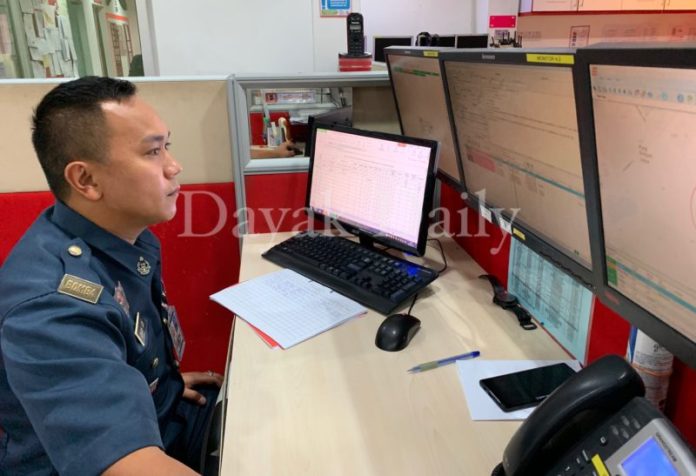By Nancy Nais
(Read Part 1: https://dayakdaily.com/the-pulse-of-the-fire-and-rescue-department-part-1/)
THEY may not rush to scene to extinguish fires, rescue humans or animals, but Operations Centre (PGO) officers are the ‘pulse’ of the Fire and Rescue Department (Bomba) nationwide.
These officers play a critical role in communications to ensure the successful outcome of all emergency cases they received.

Automatic Fire Monitoring System (SPKA)
Apart from handling emergency calls from MERS 999 or the respective fire stations as mentioned in Part 1, PGO officers also monitor the Automatic Fire Monitoring System (SPKA).
DayakDaily was recently given the opportunity to spend two full shifts (24 hours) at the PGO in Kuching to watch and understand how this section of Bomba operates. The system looks complicated, but it is obviously very important as it plays a major role in loss prevention during emergencies.
According to a PGO shift leader Zian Azizi Yusuf, the purpose of such a system is to detect a fire in its early stages, notify the building occupants that there is a fire, and to report the emergency to first responders.

The SPKA is the latest system used by Bomba, replacing the old Computerised Monitoring System (CMS).
“Every designated premises or buildings under Section 27 of the Fire Services Act (Act 341) would be required to link their fire alarm system to the nearest fire station through SPKA. There are 9 types of premises that needed Bomba certification namely, libraries, hospitals, hotels, factories, shops, offices, dormitories, assembly halls and storage. Therefore, SPKA is compulsory for them to install,” Zian emphasised.
Some premises may be exempted from installing SPKA, depending on height and space.
However, Zian stressed that any premises that has a sprinkler system must install SPKA.
Taking a shopping mall, as an example, Zian said when a ‘break glass’ is broken or smoke detector triggered in the building, it will automatically alert Bomba at the PGO.
“We will be able to see where is the location and what had happened. Then PGO will call the premises to check. Sometimes, it is a ‘false alarm’ because they are either conducting a test run or fire drill,” he added.
Government Integrated Radio Network (GIRN)
Bomba is also using a system called Government Integrated Radio Network (GIRN), which provides a fail-safe network for rescue agencies and rescue teams to communicate with each other.

Currently used by more than 10 Malaysian enforcement agencies, from security, public safety and emergency to first responders and law enforcement organisations, this system integrates communications, information, resources and assets of various organisations into one unified platform.
The equipment includes hand-held and mobile radios in a variety of configurations for vehicles, motorcycles, marine and desktop installations for faster communication links and to improve operations.
Genuine and prank calls
PGO Sarawak chief Wan Abdul Mubin Wan Abdullah said from the 2,388 calls for fire cases and 5,807 for rescue and special humanitarian services made to PGO Sarawak last year, 16 were prank calls.
In 2017, PGO Sarawak received 1,792 calls for fire cases and 5,109 calls for rescue and special humanitarian services. Out of this, 21 were prank calls.
“Although we have the Response Centre (RC) to filter all the emergency calls that come in, there are occasions where we still receive prank calls, including those that call the PGO or fire station’s direct lines. If the PGO officers identifies a prank call, they will advise such callers to end the call,” he said.


Members of the public are advised not to misuse the emergency number because lives and property could be at stake.
One should be aware that if caught, offenders would be dealt with under Section 233 of the Communications and Multimedia Act 1998, which provides for a fine of RM50,000 or jail time of not more than one year or both upon conviction.
Although they are not considered as heroes unlike their colleagues, Wan Abdul Mubin is very proud of his team and the duties they are entrusted to do.
“We’ve never asked to be called ‘heroes’ because it is the team’s duty to provide the best for the department. We may be at the ‘back’, but I am proud of my team’s commitment,” he said. — DayakDaily








